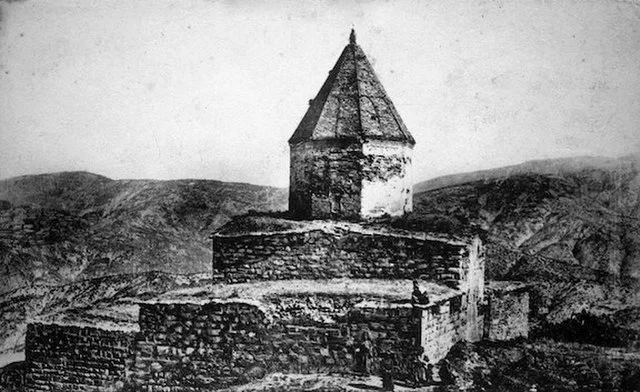Aparank Monastery stands as an important historical site in medieval Armenian heritage. Located in present-day Turkey, the monastery lies in the ancient region of Tayk, a significant Armenian settlement in the medieval period. Built between the 5th and 7th centuries AD, Aparank Monastery reflects Armenia’s early Christian culture and architectural traditions.
Get your dose of History via Email
Historical Background
The monastery dates to a time when Armenia had embraced Christianity as a state religion. Early Armenian Christians built many monasteries during the 5th century AD to promote Christian teachings and community life. Aparank Monastery, in particular, served both as a religious center and a cultural site. Its position in the region of Tayk made it a vital point for the Armenian Church’s influence in the surrounding area.
Over centuries, Aparank Monastery experienced periods of prosperity and decline. Despite challenges, such as invasions and natural decay, it remained a symbol of Armenian identity in Tayk. The monastery also witnessed shifts in political control, notably during the Byzantine Empire’s rule in the region, followed by the influence of the Seljuks in later centuries.
Architectural Design
Aparank Monastery features classic Armenian architecture of the early medieval period. It consists of several structures, including a main church and auxiliary buildings for monastic life. The design emphasizes both simplicity and function, showcasing thick stone walls and small windows. These features are typical of Armenian religious architecture, combining Roman and local styles.
The church at Aparank Monastery is cross-shaped, a common layout in Armenian ecclesiastical buildings. Its interior includes high arches and a domed roof, allowing natural light to enter the central space. Stone carvings and inscriptions found on the walls highlight the craftsmanship and religious devotion of the period.
Religious and Cultural Significance
Aparank Monastery served as a center for Armenian Christian life in Tayk. Monks and scholars gathered here to study religious texts, perform rituals, and educate the local population. In this way, Aparank Monastery played a role in preserving Armenian Christian beliefs, language, and culture.
Religious art within the monastery, such as frescoes and carved stone crosses, represents Armenia’s dedication to Christianity. The monastery became a pilgrimage site for Armenians who viewed it as a place of spiritual significance. These activities reinforced the role of Aparank Monastery as a cultural hub.
Decline and Modern Status
Over time, Aparank Monastery faced several challenges. Changing political powers and the eventual decline of the Armenian presence in the region affected its upkeep. After Armenian communities left the area, the monastery gradually fell into disrepair. Many structures were damaged or lost due to natural weathering and lack of preservation efforts.
Today, the ruins of Aparank Monastery remain a reminder of Armenia’s early Christian heritage. Efforts to document and preserve what remains continue, with historians and archaeologists studying its architecture, artifacts, and inscriptions.
Conclusion
Aparank Monastery holds a unique place in Armenian history as a symbol of religious and cultural heritage. From its founding between the 5th and 7th centuries AD to its current status as a historical ruin, the monastery tells the story of Armenia’s Christian identity. Though only remnants survive today, Aparank Monastery endures as a testament to Armenian architecture, devotion, and resilience in the medieval period.
Source:

